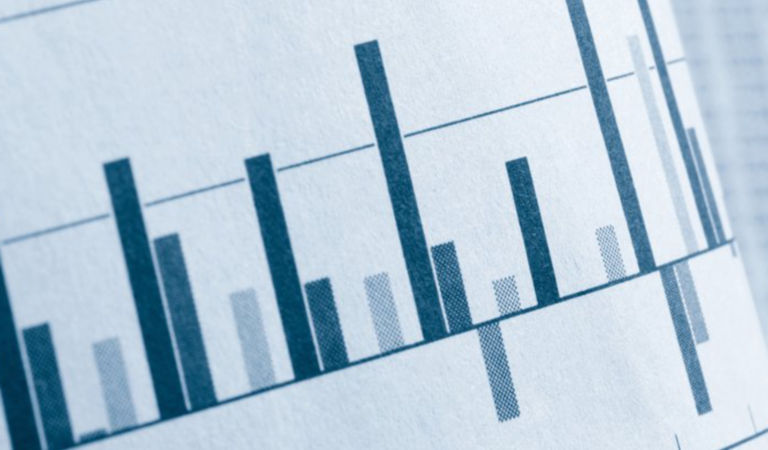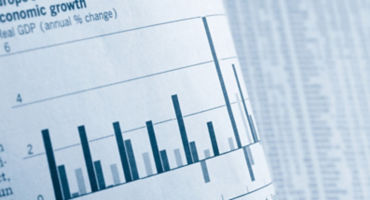Equities
Global equities (-3.5%) declined in September, ending the month with an 11.6% gain year to date. Upward pressure on government bond yields posed a headwind for risk assets, with the prospect of a lengthy period of high interest rates denting the appeal of stocks and threatening global economic growth. A continued decline in core inflation led many major central banks, including the US Federal Reserve (Fed), to keep interest rates unchanged, allowing policymakers time to assess the impact of high interest rates and tighter credit conditions on economic growth and inflation. The Bank of Japan (BOJ) held interest rates stable amid extremely high uncertainties surrounding economies and financial markets domestically and abroad, while the European Central Bank (ECB) raised interest rates by 25 basis points (bps) but signaled that its tightening cycle may be complete. China’s economy showed signs of stabilizing in the wake of the government’s recent policy adjustments, as macroeconomic indicators for manufacturing, services, retail sales, credit growth, exports, and inflation improved. However, the beleaguered property sector remained the key impediment to a sustained economic recovery. Crude oil prices rallied to a 10-month high after Saudi Arabia and Russia extended production cuts to the end of the year, reducing crude inventories by 3.3 million barrels per day and marking the biggest global deficit since 2007.
US
US equities (-4.8%) fell sharply, registering their worst monthly performance this year. Stocks were pressured by rising Treasury yields amid firming views that the Fed will keep interest rates elevated for a prolonged period, while weaker-than-expected consumer confidence raised concerns about the durability of household spending, which has buttressed the economy against recession. As expected, the Fed left interest rates unchanged at a target range of 5.25% – 5.5% as it awaits further evidence that the recent inflation slowdown can be sustained. A combination of persistent inflation in some areas and a brighter outlook for economic growth and hiring led the Fed to predict one more interest-rate hike in 2023 and a tighter policy path over the next two years. The Fed’s median estimate for interest rates increased to 5.1% at the end of 2024 and 3.9% for 2025, significantly higher than its June estimates of 4.6% and 3.4%, respectively. The Personal Consumption Expenditures Index (PCE) — the Fed’s preferred gauge of consumer price inflation — accelerated at a 0.4% monthly pace in August due to rising gasoline prices. However, the core PCE rose only 0.1%, the weakest monthly gain since 2020, with core prices increasing at a modest annualized pace of 2.2% over the three months through August. A broadening labor strike against the three major US automakers, which began on September 15, is estimated to have cost the US economy US$4 billion over the first two weeks of the strike. US lawmakers narrowly avoided a government shutdown by passing bipartisan legislation that extended government funding through mid-November.
Economic data released during the month underscored the resilience of the economy. Initial jobless claims in September unexpectedly dropped to their lowest level since January, signaling that the labor market remained tight even as job growth has gradually cooled. After a burst of spending in the previous two months, consumer outlays softened in August; monthly retail sales (excluding gasoline) grew only 0.2% after a 0.7% increase in July, while consumer spending advanced 0.4% following a 0.9% gain a month earlier. Ongoing resiliency in the labor market has bolstered incomes and purchasing, but spending in the months ahead faces stiff headwinds from higher prices, resuming student loan payments, and tightening credit conditions. The Conference Board’s Consumer Confidence Index slumped more than anticipated, to a four-month low of 103.0, after August’s results were revised higher to 108.7. Consumers were less optimistic about the six-month outlook for household finances and the labor market, and their intentions to purchase big-ticket items waned. Limited inventory, elevated prices, and the highest mortgage rates in decades took a toll on the housing market. In August, new- and existing-home sales declined, and housing starts registered their slowest growth in three years. Furthermore, homebuilder sentiment in September declined for the first time this year.
The manufacturing sector contracted at the slowest pace in a year as the Institute of Supply Management (ISM) Manufacturing Index rose to 49.0 in September on improvements in new orders and strength in production and employment. A pickup in new orders and hiring in August drove the ISM Services Index up 1.8 points, to 54.5, a six-month high. The surprisingly strong result underscored the resilience of demand, but persistent inflation pressures remained a concern as materials costs and wages continued to accelerate. The National Federation of Independent Businesses (NFIB) Small Business Optimism Index edged lower, with the share of companies reporting higher sales in the past three months declining to a three-year low.
Ten of the 11 sectors in the S&P 500 Index (-4.8%) posted negative results. Energy (+2.6%) was the best-performing sector. Health care (-3.0%) outperformed, driven by health care providers (+3.6%) and biotechnology (+0.4%). Communication services (-3.3%) also outperformed, driven by wireless telecommunication services (+2.8%). Real estate (-7.2%) was the worst-performing sector, followed by information technology (-6.9%). Consumer discretionary (-6.0%) also underperformed, driven lower by broadline retail (-7.8%) and specialty retail (-7.1%).
Europe
European equities (-1.3%) declined. The European Commission (EC) downgraded the eurozone’s economic growth outlook for 2023 to 0.8%, from 1.1% projected in May. Europe’s economic outlook has weakened in recent months amid an ongoing contraction in manufacturing, trade tensions with China, a reduction of government support measures, and falling consumer spending due to high inflation and rising borrowing costs. The ECB and the central banks of Norway and Sweden raised interest rates by 25 basis points (bps) to battle sticky inflation. However, the ECB conceded that its focus would likely shift to the duration of restrictive policy rather than the level, signaling that borrowing costs may be high enough to return inflation to the bank’s target. The central banks of Switzerland and the UK surprisingly left rates unchanged as inflation eased, becoming the first European central banks to pause their hiking cycle. Preliminary estimates showed that eurozone headline inflation fell to 4.3% in September, from 5.2% in August, and core inflation dropped more than expected to 4.5%, from 5.3%, underscoring that tighter monetary policy has been effective thus far. The EC launched an anti-subsidy investigation on Chinese electric vehicles, heightening trade tensions between the European Union and China.
Europe’s manufacturing sector remained mired in a deep downturn; the HCOB Eurozone Manufacturing Purchasing Managers’ Index (PMI) registered 43.4 in September, down slightly from 43.5 in August, as new orders continued to shrink at a pace rarely seen since 1997, job losses accelerated, and business confidence deteriorated. The Flash Eurozone Composite PMI in September showed that services sector activity edged higher but contracted for the second consecutive month, led by the sharpest reduction in new business since the pandemic. Services input costs, including wages, rose for the second straight month, but output prices continued to soften. The EC’s Economic Sentiment Indicator was slightly lower in September, sliding to 93.3; consumer confidence declined markedly for the second month in a row due to the prevailing pessimistic economic outlook, while industry confidence showed signs of stabilizing.
Amid ongoing strains from energy price shocks, high interest rates, and a subdued global economy, Germany’s (-3.5%) economy is forecast to contract by 0.6% in 2023 and grow 1.3% in 2024, worse than previous estimates, according to the Joint Economic Forecast. The ZEW Indicator of Economic Sentiment increased more than anticipated on expectations of stable eurozone interest rates, but the assessment of the economic situation continued to worsen considerably. In the UK (+2.9%), economic activity contracted in September, with the S&P Global/CIPS Flash Composite PMI dropping to 46.8, from 48.6 in August, driven by a continued decline in manufacturing output and a steep drop in the services sector. Headline inflation surprisingly eased to 6.7% in August, while core inflation dropped sharply to 6.2%. In Spain (-0.5%), conservative People’s Party leader Alberto Núñez Feijóo failed in his second and final attempt to form a government following an inconclusive general election. Acting Prime Minister Pedro Sánchez will now have a chance to secure another term. In Italy (-1.6%), 10-year government bond yields climbed to their highest level in a decade after the government’s widening budget deficit forecasts revealed strains on public finances.
Pacific Basin
Pacific Basin equities (-0.6%) ended lower. In Japan (+0.5%), the BOJ announced an unscheduled bond-purchase operation, signaling its determination to manage the upward momentum in sovereign yields. The bank maintained its ultra-easy monetary policy settings and the parameters of its yield control policy, emphasizing the need to remain accommodative until inflation is driven by demand and higher wage growth. The BOJ’s Governor Kazuo Ueda tempered speculation of a near-term interest-rate hike, putting downward pressure on the yen. Japan’s core CPI inflation was unchanged and slightly above expectations in August, rising 3.1% from a year ago. The economy expanded slower than initially estimated, with GDP growing at a 4.8% annualized pace in the second quarter. Prime Minister Fumio Kishida outlined a new economic stimulus plan featuring measures to reduce the stress of inflation on households, boost wages, and spur domestic investment in key growth areas like semiconductors and batteries.
In Australia (-2.5%), the Reserve Bank of Australia (RBA) maintained its tightening bias but left its key interest rate unchanged at 4.1% for a third straight meeting due to the risks of a sharper slowdown in economic growth and consumption and a weak recovery in China, Australia’s largest trading partner. In August, annual core inflation slowed to 5.5%, from 5.8%, increasing the likelihood that the RBA will keep interest rates unchanged next month. Business confidence and business conditions picked up, but consumer confidence fell further into “deeply pessimistic” territory. The labor market remained tight as the unemployment rate held steady at 3.7%, while retail sales were weaker than expected. GDP advanced by a greater-than-anticipated 0.4% in the second quarter (2.1% annually), driven by exports, public investment, and less interest-rate-sensitive sectors. Australia’s government broke a months-long deadlock in Parliament’s upper house to secure support for its signature housing policy, which aims to build 30,000 new homes over the next five years to tackle a supply crisis.
In Hong Kong (-5.5%), exports extended their longest streak of monthly declines on record, falling 3.7% year over year in August, as lackluster demand and China’s slow recovery weighed on the city’s economy. Stock market trading was halted twice after historic rainstorms brought the city to a standstill and caused damage in excess of US$100 million. The city’s slumping property market was further pressured after HSBC — the dominant lender in Hong Kong — raised mortgage rates by 50 bps on home loans linked to the Hong Kong overnight interbank offer rate (HIBOR). Amid tight liquidity, the HIBOR rose to its highest level since 2006. In response to lower investor confidence and international investment, the government established a task force to enhance stock market liquidity and reignite market activity. In Singapore (+0.6%), exports dropped 20.1% year over year in August — the 11th straight monthly decline — as slumping demand hobbled the trade-dependent economy. Economists downgraded the country’s 2023 economic growth forecast to 1.0% for 2023, from 1.4% in June.
Emerging Markets
Emerging markets (EM) equities (-1.8%) fell, with all EM regions sliding lower for the second consecutive month. Europe, the Middle East, and Africa (EMEA) led the decline, followed by Asia and Latin America.
EMEA equities (-2.3%) were dragged lower by Saudi Arabia (-4.3%), which extended its voluntary oil cuts to the end of the year despite a rally in oil prices and expectations of waning supply in the fourth quarter. Intensifying talks between Saudi Arabia and Israel offered hope that the two countries could strike a historic peace agreement, which would dramatically reshape geopolitics in the Middle East and beyond. South Africa’s (-3.7%) central bank maintained interest rates at 8.25% despite inflation settling firmly within its target of 3% – 6%, helping to stabilize the rand. Despite inflation in excess of 10%, Poland’s (-5.8%) central bank surprised markets with a larger-than-anticipated 75 bps cut in interest rates, the first reduction in more than three years. The decision came ahead of a closely contested and divisive parliamentary election in October, which is expected to have far-reaching consequences in Poland and across Europe. Greece (-8.1%) fell sharply after the ECB raised interest rates to a record high of 4%, although the country’s debt received a credit-rating boost from Moody’s to Ba1 with a stable outlook (one notch shy of investment grade).
Asian equities (-1.8%) fell amid a decline in China (-2.8%), where the beleaguered property sector continued to weigh on equities. A deepening downturn in China’s new-home prices, real estate investment, and sales clouded the outlook for economic growth, with Moody’s cutting its outlook for the country’s property sector to negative. However, improving macroeconomic indicators for manufacturing, services, retail sales, credit growth, exports, and inflation tentatively signaled that its economy is stabilizing in the wake of the government’s incremental policy adjustments. In South Korea (-3.1%), improving relations with Japan led to the launch of the country’s first samurai bond in Japan, which was worth nearly US$500 million. Officials were optimistic that Korea would become a constituent within the FTSE Russell’s World Government Bond Index, potentially leading to billions of dollars of foreign capital inflows. In India (+2.0%), central bank Governor Shaktikanta Das highlighted the country’s strong and improving economic fundamentals but indicated that persisting global uncertainty poses a risk to the economy. He also added that the bank expects inflation to remain above its 4% target, with potential upside risks from food inflation and the impact of El Niño.
In Latin America (-0.5%), central banks’ policy rates diverged from those of developed markets. Brazil (+1.3%) generated solid returns. Second-quarter GDP expanded more than expected, growing 0.9% from the first quarter, and the central bank lowered interest rates by 50 bps. The central banks of Chile (-1.8%) and Peru (-7.5%) also cut policy rates as inflation declined. In Mexico (-3.4%), government officials announced plans to widen the fiscal deficit for President Andrés Manuel López Obrador’s final year in office, with the projected overall 2024 deficit widening to 5.4% of GDP. Mexico’s ruling Morena party selected Claudia Sheinbaum Pardo, the former mayor of Mexico City and a longtime political ally of the president, as the party’s leading candidate in next year’s election.
Fixed Income
Resilient economic data and still-hawkish monetary policy stances led to a material increase in sovereign yields. Excess returns exhibited mixed results across most fixed income sectors.
US economic releases remained broadly robust, particularly for the labor market, although consumer confidence declined. Personal incomes grew as forecast, while consumer spending fell short of expectations. Trade flows continued to recover from pandemic disturbances and the trade deficit narrowed. Retail sales inventories advanced and higher gas purchases supported sales growth, while wholesale inventories slipped slightly. Higher military spending boosted durable goods orders, and industrial production advanced on improved activity across factories, mines, and utilities. The S&P Global US manufacturing PMI inched higher but remained in contractionary territory. Housing data suffered as surging mortgage rates restrained new home sales, while housing starts fell more than anticipated on a drop in single-family units, particularly in the US Northeast and Midwest. Eurozone inflation eased to its lowest level in almost two years. Germany’s manufacturing PMI remained deep in contraction, and the IFO Business Climate Index slipped on a worsening assessment of expectations. The UK’s headline and core inflation edged lower, while construction activity fell due to cutbacks on projects and local planning. China’s exports fell amid weaker consumer spending and lingering post-pandemic struggles. Japan’s industrial production declined, hurt by weakness in the auto and transportation equipment sectors. Canada’s unemployment rate remained below estimates as employers added full-time positions. In Australia, consumers cut back on spending amid strains from a higher cost of living, dragging down retail sales.
The Fed projected one additional interest-rate hike this year and fewer rate cuts in 2024. The ECB hiked policy rates by 25 bps, signaling that it would keep rates unchanged for a prolonged period, while the Bank of England (BOE) held interest rates steady as inflation edged lower. The BOJ retained its ultra-loose monetary policy and indicated reluctance to phase out its massive stimulus program.
Global sovereign bond yields ended higher as long-term growth expectations rose. Central banks united with a “higher for longer” credo, even as unprecedented policy tightening seemingly reached a peak. The US Treasury curve showed a “bear steepening” after the Fed projected more tightening this year and fewer cuts in 2024. A similar steepening trend occurred in UK gilts and European yield curves, although front-end UK bond yields rallied amid the BOE’s pause in interest-rate hikes and anticipated disinflation. In EM, select central banks began their rate-cutting cycle. Rising crude oil prices and renewed pressure on EM currencies dampened enthusiasm across the sector. The Bloomberg TIPS index delivered a total return of -1.85%, and the 10-year breakeven inflation rate increased by 10 bps, to 2.34%, during the month.
Global credit outperformed duration-equivalent government bonds. Within the securitized sectors, commercial mortgage-backed securities outperformed, agency mortgage-backed securities underperformed, and asset-backed securities performed relatively in line with duration-equivalent government bonds. Within EM, local markets debt (-3.37%) underperformed external debt (-2.60%), in US-dollar terms. Spread widening detracted from external debt results, and an increase in US Treasury yields also had a negative impact. Depreciation in EM currencies drove the negative performance within local markets, and movement in EM rates also hurt results.
Currencies
The US dollar gained versus most major currencies, as continued economic growth bolstered expectations that the Fed will keep interest rates higher for longer. The euro declined amid ongoing weakness in economic data, while a languid UK economy and the market’s faltering confidence in the BOE’s inflation strategy weighed on the British pound. The New Zealand dollar and Swedish krona appreciated modestly but remained much weaker compared to the beginning of the year. The Japanese yen weakened as the BOJ maintained its accommodative policy stance in the hope of achieving its inflation target. The US dollar strengthened versus EM currencies, although Mexico and Colombia resisted the rate cuts enacted by other countries in the region.
Commodities
Commodities (+4.1%) generated strong gains. Energy (+7.8%) rallied for the fourth straight month. Gas oil (+14.1%) and heating oil (+9.2%) continued to rise amid concerns about tight supplies, exacerbated by the extension of Russian and Saudi Arabian production cuts to the end of the year. Crude oil (+8.7%) ended higher, with US inventories down more than 3% compared to a year earlier. Gasoline (-3.5%) prices continued to cool as seasonal demand declined and refiners started to produce less-expensive winter-blend fuel. US natural gas (-4.8%) was pressured by milder weather forecasts and warmer-than-normal temperatures across most of the country.
Industrial metals (+1.5%) advanced. Zinc (+9.3%) rallied as Chinese imports rose due to low domestic inventory levels, while aluminum (+7.0%) benefited from surging demand in India, driven by the nation’s shift to green energy. Lead (-1.6%) fell, with the London Metals Exchange Warehouse and Stock report showing an increase in stocks during the month. Copper (-1.5%) and nickel (-8.0%) were pressured by uncertainty about China’s economy, particularly the property market.
Precious metals (-5.1%) prices fell during the month. Both silver (-9.1) and gold (-4.7%) continued to fall as the US dollar rallied to its highest level this year following the Fed’s messaging that interest rates will remain higher for longer.
Agriculture & livestock (-2.2%) ended lower. Wheat (-9.2%) and soybeans (-6.5%) declined as the US Department of Agriculture (USDA) reported higher-than-expected US wheat production in 2023 and higher-than-anticipated inventories for soybeans. Cocoa (-5.6%) fell, with grinding in Côte d’Ivoire up 9% year over year. Coffee (-5.0%) ended lower amid recent weakness in the Brazilian real and forecasts for rain across Brazil’s coffee-growing regions, which boosted prospects for crops. Lean hogs (-3.6%) were driven lower by an unexpected increase in US inventory reported in the USDA quarterly Hogs & Pigs report. Feeder cattle (-0.8%) and live cattle (+1.9%) ended mixed as a USDA report showed an uptick in the slaughter rate, while retail beef prices hit another record high. Cotton (-0.3%) finished slightly lower, with recent rainfall helping to provide relief from the persistent heat and drought across the Texas growing region. Corn (+0.1%) rose as higher energy prices pushed ethanol feedstock prices higher, while sugar (+5.1%) advanced amid rising demand and tight supply due to extreme weather in key producing countries like India and Thailand.














Japan equity: Reason to believe
Continue readingBy
Toshiki Izumi, CFA, CMA